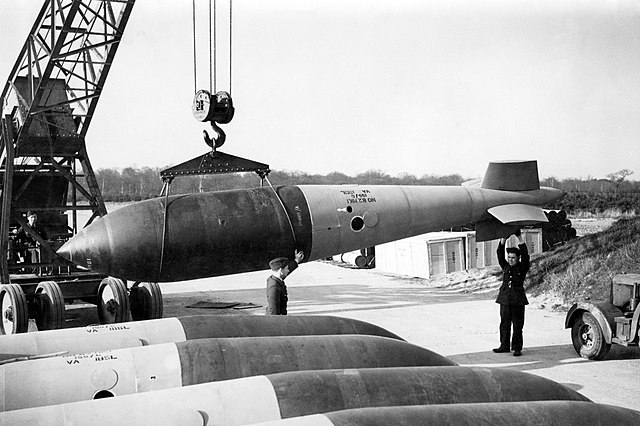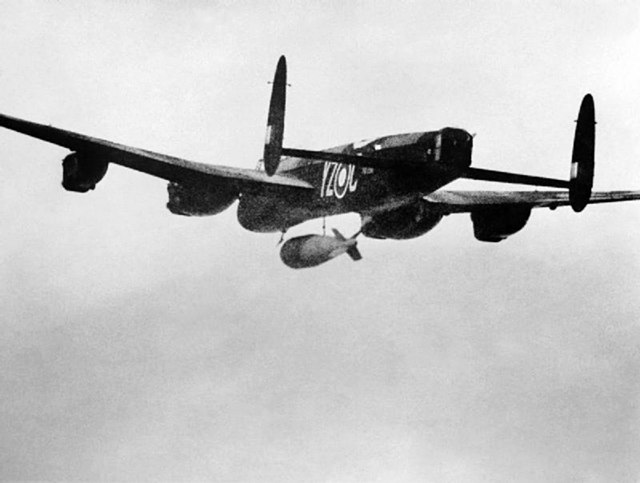The Bomb, Medium Capacity, 22,000 lb was a 22,000 lb (10,000 kg) earthquake bomb used by RAF Bomber Command against German targets towards the end of the Second World War. The bomb was originally called Tallboy Large until the term Tallboy got into the press and the code name was replaced by "Grand Slam". The bomb was similar to a large version of the Tallboy bomb but a new design and closer to the size that its inventor, Barnes Wallis, had envisaged when he developed the idea of an earthquake bomb. It was the largest and most powerful conventional aerial bomb used by either side during the war.
A Grand Slam bomb being handled at RAF Woodhall Spa in Lincolnshire
Grand Slam bomb casings awaiting delivery
Avro Lancaster B Mk I (Special) with a Grand Slam, running up its engines at Woodhall Spa MH4263
A 617 Squadron Lancaster dropping a Grand Slam bomb on the Arnsberg viaduct, 19 March 1945.
The earthquake bomb, or seismic bomb, was a concept that was invented by the British aeronautical engineer Barnes Wallis early in World War II and subsequently developed and used during the war against strategic targets in Europe. A seismic bomb differs somewhat in concept from a traditional bomb, which usually explodes at or near the surface and destroys its target directly by explosive force; in contrast, a seismic bomb is dropped from high altitude to attain very high speed as it falls and upon impact, penetrates and explodes deep underground, causing massive caverns or craters known as camouflets, as well as intense shockwaves. In this way, the seismic bomb can affect targets that are too massive to be affected by a conventional bomb, as well as damage or destroy difficult targets such as bridges and viaducts.
A Grand Slam bomb being handled at RAF Woodhall Spa in Lincolnshire
RAF ground crew handling the Tallboy that was later dropped on the La Coupole V-weapon site at Wizernes, France in 1944





